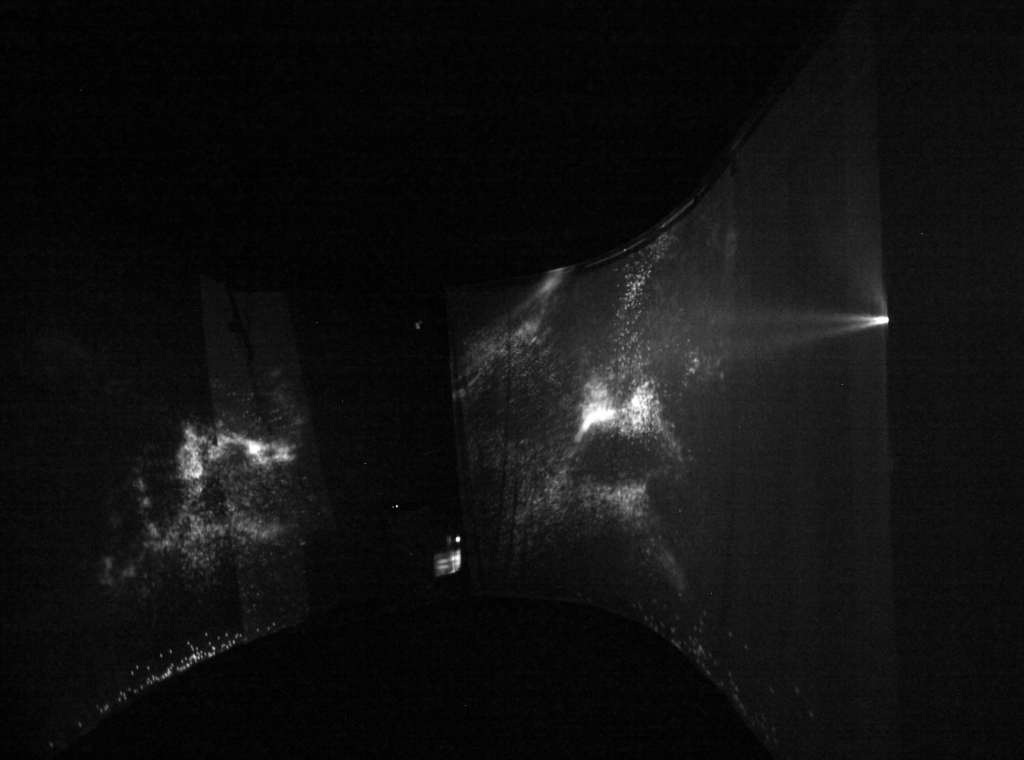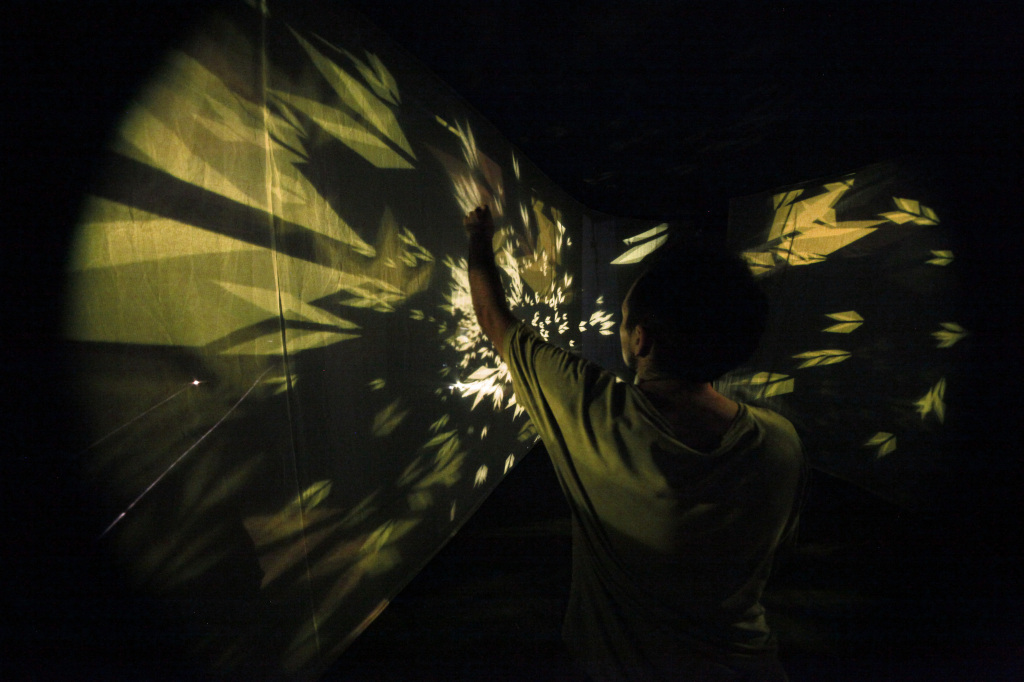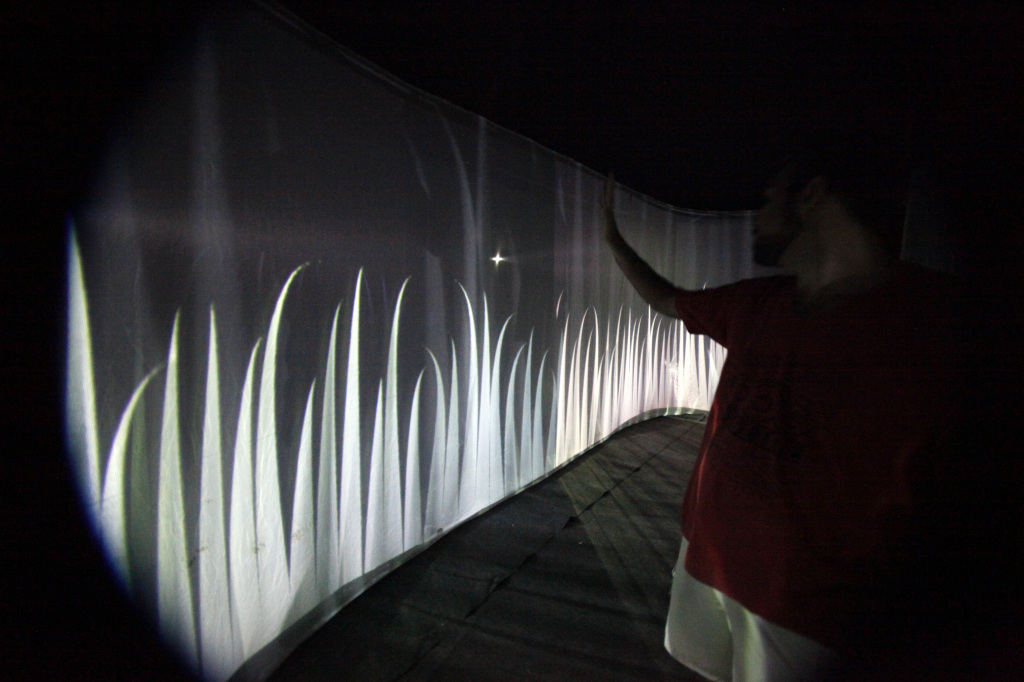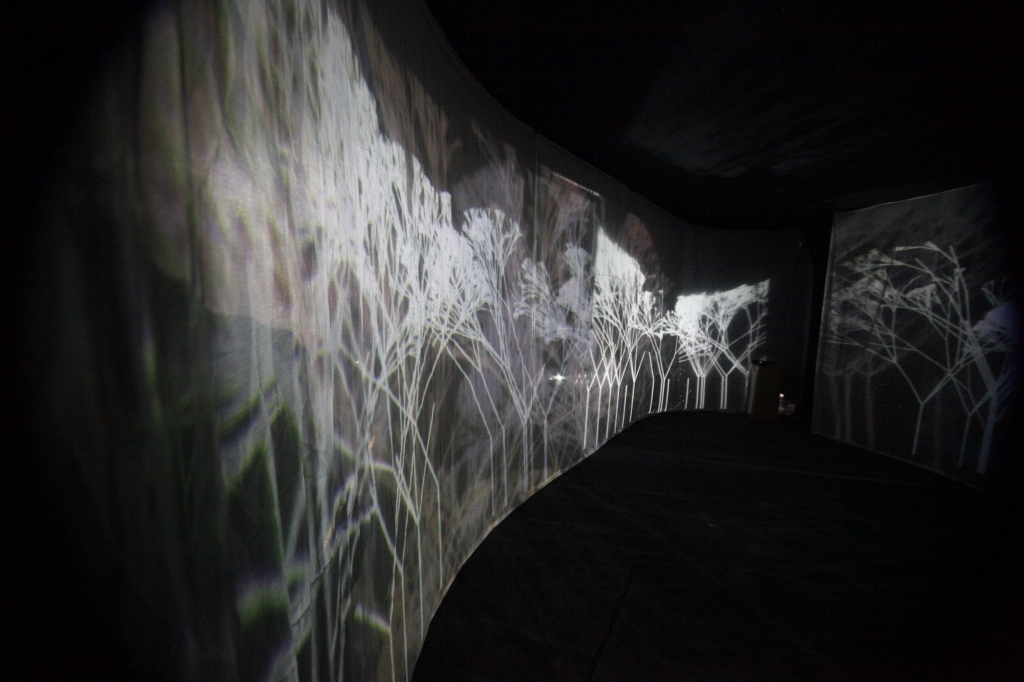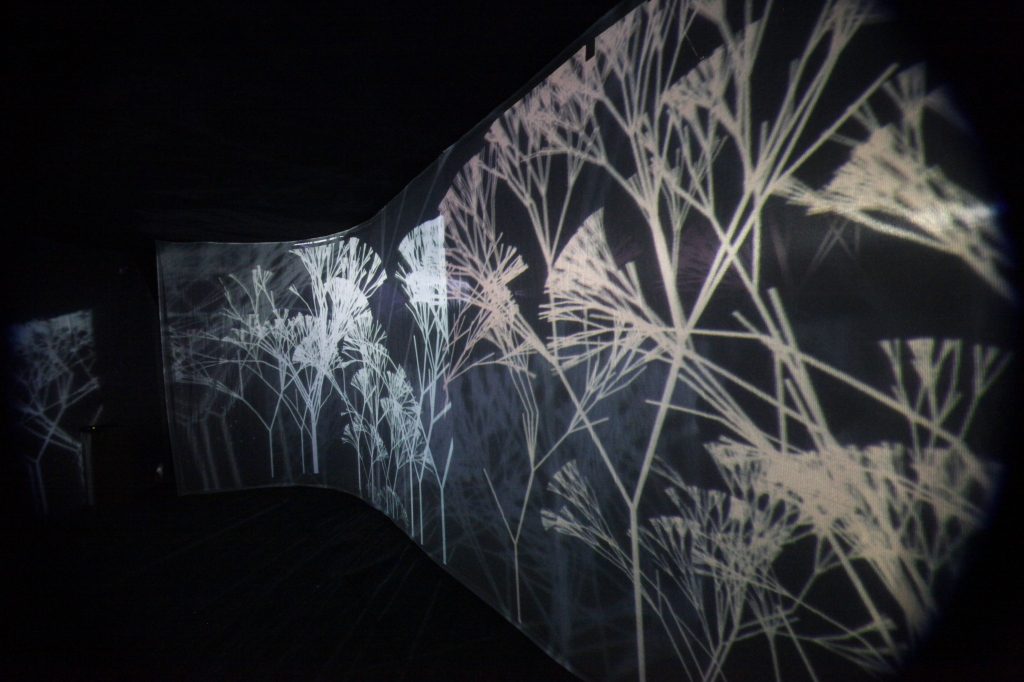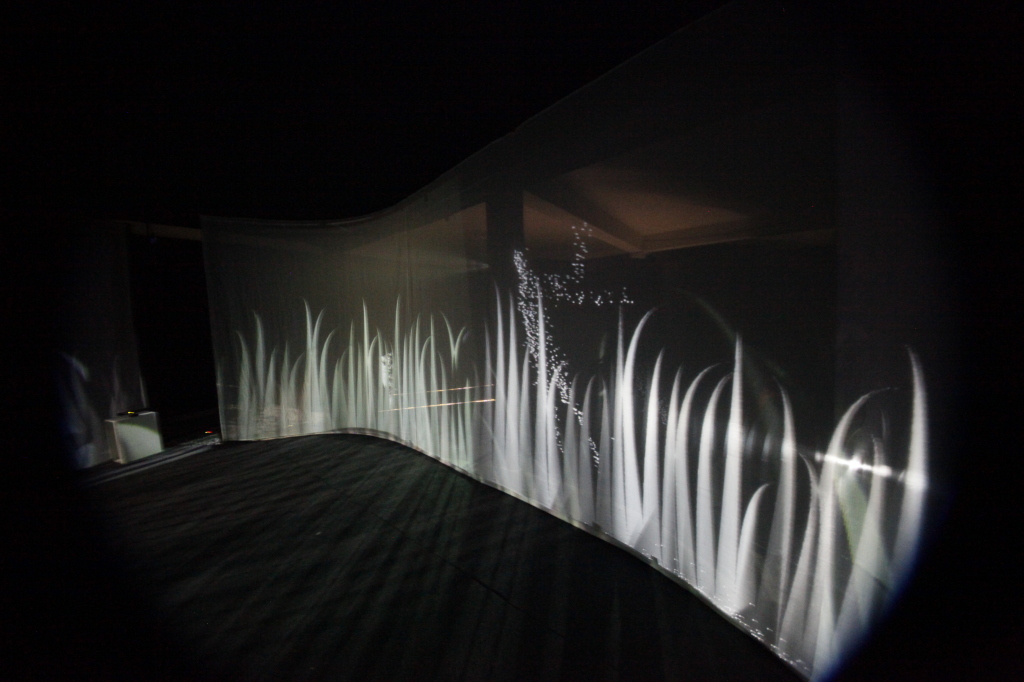O Gabinete de Alice é uma instalação imersiva que convida o público a vivenciar situações sensoriais através de meios audiovisuais associados a recursos de interação física e gestual. O projeto é materializado em uma cabine onde imagens e gráficos respondem à presença e interações do púbico. Sons, padrões visuais, pulsações luminosas e sensores de movimento conduzem o visitante em uma viagem narrativa pontuada por diferentes intensidades. É uma obra de caráter experimental que explora algumas formas possíveis de condução da percepção, que surgiu de uma confluência entre campos distintos, unindo experimentações em artes visuais, mídias interativas e estudos sobre o movimento e fisiologia do corpo.
[English info below]
Registro da instalação:
A primeira versão da instalação foi montada em 2014 na Galeria do Jardim no Museu de Arte da Bahia, no Corredor da Vitória, em Salvador. A versão original do projeto foi idealizada por Lucas Bambozzi, Laura Campos, Ale Duarte e Joaozito Pereira. Em 2016 uma nova versão é apresentada na Caixa Cultural em São Paulo.
O Gabinete de Alice faz referência aos Gabinetes de Curiosidades, ou Quartos das Maravilhas (Wunderkammer), populares nos séculos XVI e XVII, que de certa forma antecederam os museus e exposições atuais. Os gabinetes daquele tempo reuniam instrumentos tecnicamente avançados e curiosidades advindas de pesquisas e explorações associadas ao contexto das grandes navegações e descobertas.
O projeto O Gabinete de Alice é resultado de uma analogia entre essas referências, o espaço informacional que nos rodeia e a percepção alterada de Alice de Lewis Carrol – em alusão livre e colateral.
A instalação surgiu da vontade de uma experiência: a de conduzir estados sensoriais através de recursos tecnológicos diversos. Em algum ponto, pensamos, esse processo se encontra com a arte. Em algum momento, faz ver talvez, nossas capacidades fisiológicas. Ou esbarra em hábitos perceptivos arraigados. Ou evidencia estados subjetivos em relação às situações criadas. Ou aponta um entendimento de arte que absorve experiências alheias a seus sistema. E é em torno desse ponto difuso de confluências e coexistências, que o projeto foi se estruturando.
O Gabinete situa-se assim nessa fronteira difusa, quase improvável, que busca entender como esses espaços híbridos podem reduzir ou aumentar a nossa potencia sensorial perceptiva.
É um projeto que arrisca o instável, o indefinido, e convida o público a pensar formatos que se expandem, que permitem pensar a arte para além de padrões pre-configurados, em contato com campos a serem experimentados, na prática, na tessitura do que escapa.
Depoimentos:
Ficha técnica:
Idealização / Concept: Ale Duarte, Joãozito Pereira, Laura Campos e Lucas Bambozzi
Coordenação Geral / General Coordination: Laura Campos e Lucas Bambozzi
Desenho de cenografia / Scenery design: Joãozito Pereira
Direção de imagens, interatividade e conteúdo / Director of images, interactivity, and content: Lucas Bambozzi
Consultor e pesquisador em fisiologia e educação do movimento / Consultant and researcher in physiology and movement education: Alexandre Duarte
Entrevistas / Interviews: Alê Duarte
Textos / Texts: Laura Campos e Lucas Bambozzi
Montagem e cenografia (SP) / Scenery assembly: Elástica/William Zarella
Desenvolvimento tecnológico / Technological development: Toni Oliveira, Javier Cruz e Guima San
Trilha sonora / Soundtrack: Pedro Augusto Dias
Assessoria de imprensa / Media Relations: Lilian Michelan (São Paulo)
Design gráfico / Graphic design: Julio Dui
Produção executiva / Executive production: Tiago Tao e Marina Pinheiro
ENGLISH INFO:
Alice’s Cabinet is an immersive installation that invites the audience to experience sensorial situations through audiovisual media, together with physical and gestural interaction resources. It is an experimental work that explores possible ways of conducting perception and that arose out of a confluence of distinct fields, bringing together experiments in visual arts, interactive media, and studies about the movement and physiology of the body.
The images and the interior of the installation bring to mind, in symbolic terms, a kind of cabinet, a room that synthesizes the difficulties that Lewis Carroll’s Alice faced in relation to her surroundings during her adventures, simple and at the same time complex spaces that changed in accordance with the altered perception of her surroundings.
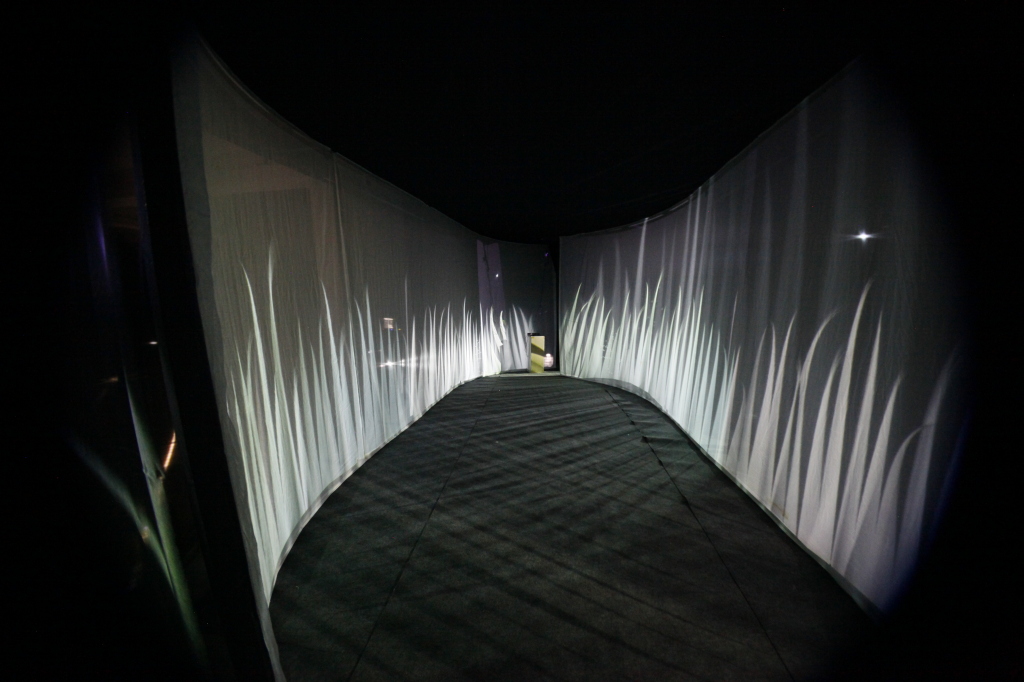
Alice’s Cabinet is a reference to Cabinets of Curiosities, or Cabinets of Wonder (Wunderkammer), which were popular in the 16th and 17th centuries and which to a certain extent preceded the museums and exhibitions of today. The cabinets of that time brought together technically advanced instruments and curiosities arising out of studies and explorations linked to the context of the great navigations and the age of discovery.
The Alice’s Cabinet project is the outcome of an analogy between these references, the informational space that surrounds us and the altered perception of Lewis Carroll’s Alice – in a free and collateral allusion.
The installation arose out of the desire for an experience: that of conducting sensorial states through the use of various technological resources. At some point, we thought, this process will mesh with art. At some moment, perhaps, it will reveal some of our physiological capabilities. Or will run up against ingrained habits of perception. Or it might reveals subjective states in relation to the created situations. Or points to an understanding of art that absorbs experiences coming from outside the system. And it was around this diffuse point of confluence and coexistence that the project structured itself.
The Cabinet is therefore situated in this diffuse, highly unlikely frontier between bits of knowledge, seeking to understand how these hybrid spaces can reduce or increase the power of our sensory perception.
It’s a project that ventures into the unstable, the undefined, and invites the audience to think about formats that expand, that allow one to think about art beyond preconfigured patterns, in contact with fields to be experienced, in practice, in the tessitura from which it escapes.
+ FOTOS:
